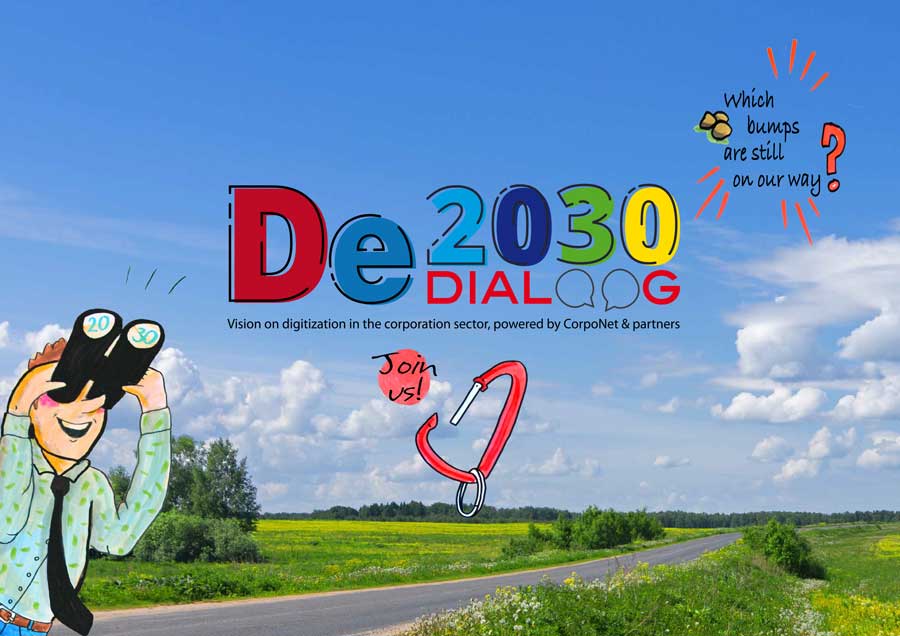The housing association of the future
Creating a digitally oriented and agile organisation requires different ways of thinking and doing

INNOVATION & IMPROVEMENT
Image: Istock
Leen Spaans
Co-founder and secretary, CorpoNet


Henk Korevaar
Co-founder, ambassador and international liaison, CorpoNet
Many an article has been written on what the housing association of the future would look like. When you read all those articles from ‘a long time ago in a galaxy far, far away...’ you will come to the conclusion that nobody really knows the answer to that question.
It’s the same with images from ‘the car of the future’. When I browse through a book on that topic, published back in 1963 (!), I see images of ‘future cars’ that in no way resemble the cars that you can spot on the road nowadays. And, back in 1963, the year 2022 must have looked like ‘the future’!
CorpoNet, a Netherlands-based networking organisation in the fields of innovation and digitalisation for social housing, was established in the year 2000 with the aim of sharing knowledge and experience between its (at this moment 150) members. In 2019, the organisation published a document that doesn’t contain a vision of the future, but instead a series of building blocks to kick-start a ‘Dialogue on 2030’.
In this brief article we’ll walk through some of the seven chapters and provide you with some examples of current projects within Dutch social housing aimed at building a ‘housing association of the future’ (and please keep in mind: the future = now).
Digital foundation
The process of transforming an organisation to be digitally oriented and agile looks suspiciously like a 1,000-mile march. It goes beyond just automating processes or collecting data. It is a combination of services, business operations, good information provision and smart use of ICT – and it requires a different way of thinking and doing.
qlinker
A different way of thinking and doing, can be illustrated by qlinker. This is a Utrecht-based ‘first Dutch fully digital housing association’. Parent association Mitros started the design of qlinker using a blank sheet of paper. On that ‘tabula rasa’ the tenant was positioned in the centre and they designed all systems, processes and procedures with the tenant front of mind. No existing ways of working were used and communication with the tenant all went via the qlinker app.
Time for the tenant
The way a housing association keeps in contact with its tenants has changed rapidly in recent years. The tenant wants to be able to contact their landlord 24/7 whenever and wherever needed. Most of these contacts are about maintenance or (payment of) rent. During the past two years – triggered by Covid-19 – demand for this form of communication increased rapidly. The call for contactless transactions (for example, signing a rental agreement) continues to get louder and louder.
Also, the average age of tenants is decreasing and these young tenants are more familiar with the use of smartphones or apps. This generation only wants to do their business online and anywhere they like. As a result, more and more housing associations have closed their offices for tenants to visit and, if face-to-face meetings are allowed, they are only by appointment.
“The way a housing association keeps in contact with its tenants has changed rapidly in recent years. The tenant wants to be able to contact their landlord 24/7 whenever and wherever needed.”
Collaboration
Housing associations collaborate with numerous external parties, such as builders, suppliers and contractors. Every working day huge amounts of data are shared with and between these parties. More and more this exchange of data takes places in a fully automated way. For the continuous flow of processes and work at hand, it is of vital importance that there is no confusion when data is exchanged. This can only be guaranteed when data and its exchange are standardised. In the Netherlands two standards are currently used for this: CORA and VERA.
VERA is a technical standard for data exchange between housing associations and suppliers and contractors. Over the past 10 years, VERA has become the standard in the Dutch social housing sector. VERA is supported by CORA, the collected best practices for the design of processes of housing associations. CORA has developed the so-called ‘Book of Processes’ that contains descriptions of almost all processes within a housing association.
What’s next?
We don’t know what the future has in store for us. But we do know that, in the not too distant future, artificial intelligence, the internet of things, robotic process automation, security, sustainability, circularity and privacy will exist for applications and services that we can’t even imagine right now.
We will keep you posted on the developments in the Netherlands in these and other areas. Should you have any questions or would you like to learn more about the above or other innovations from Holland, please contact us.



